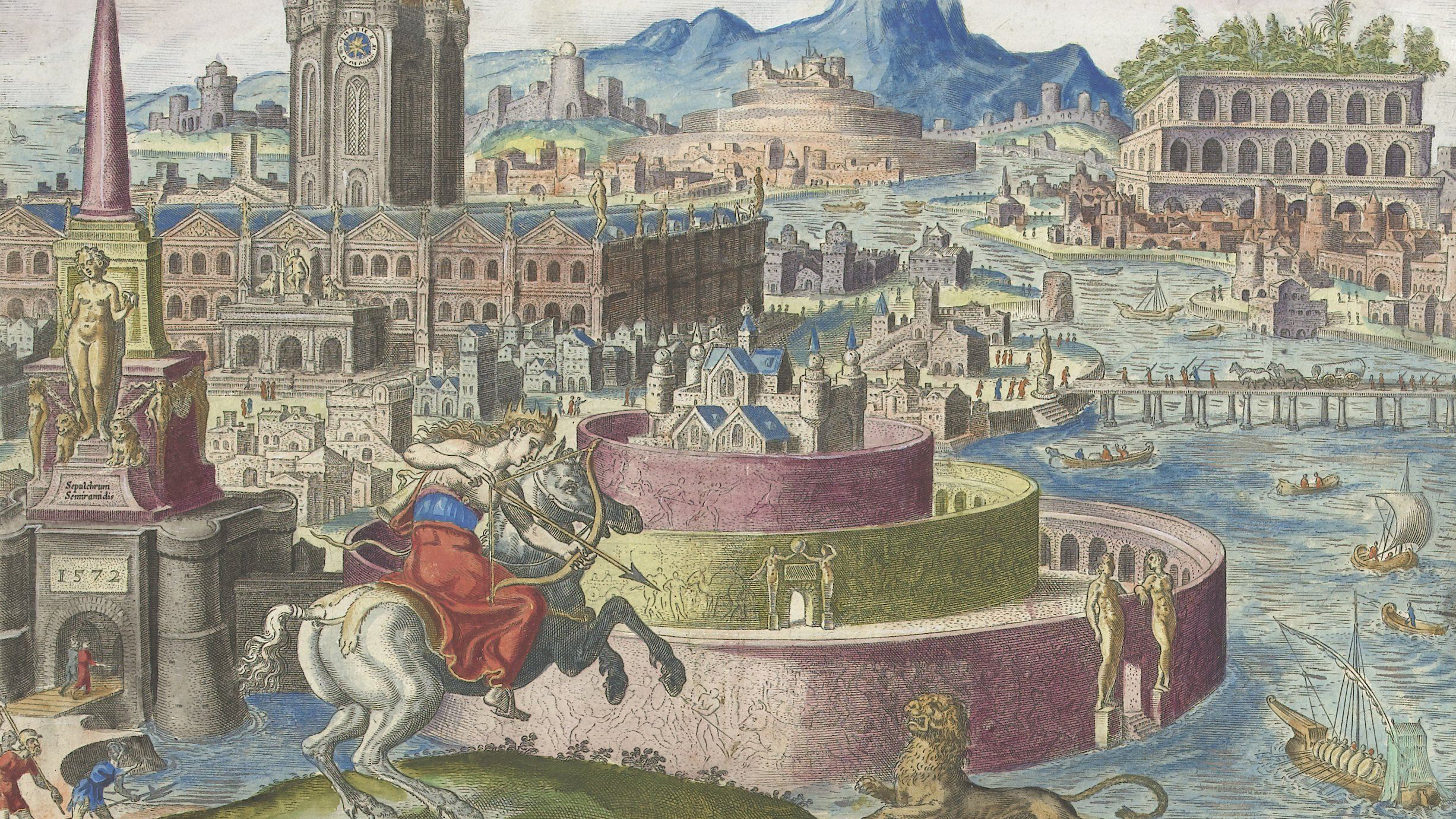Lynne Lancaster – Rome “Urbs Pensilis”: A Hanging City and Its Hanging Gardens

Detail of Philips Galle (after Maarten van Heemskerck), Walls of Babylon, 1572, engraving colored by hand and pasted on parchment album page, 209 x 261 mm (artwork in the public domain; photograph provided by the Rijksmuseum, Amsterdam)
Pliny the Elder called Rome an “urbs pensilis,” a hanging city. The expression was clearly a reference to one of the Seven Wonders of the World, the horti pensili or Hanging Gardens of Babylon. In this talk, AAR Humanities Professor Lynne Lancaster (2002 Fellow) will explore how the image of ancient Rome was influenced by the Hellenistic conception of the Seven Wonders of the World by focusing on one of the Wonders: the Hanging Gardens of Babylon.
In making his comment, Pliny was referring to a very large drain, the Cloaca Maxima, and the network of underground service tunnels and sewers that supported the city, but Rome also had hanging gardens like the Wonder itself—gardens that were supported from below so that they “floated” over the city. Both the conceptions—the hanging city and the hanging gardens—were expressions of technological feats of engineering, which made Rome the ideal city to host and even to be a Wonder.
This lecture, to be presented on Zoom and held in English, is free and open to the public. The start time is 6:00pm Central European Time (12:00 noon Eastern Time).